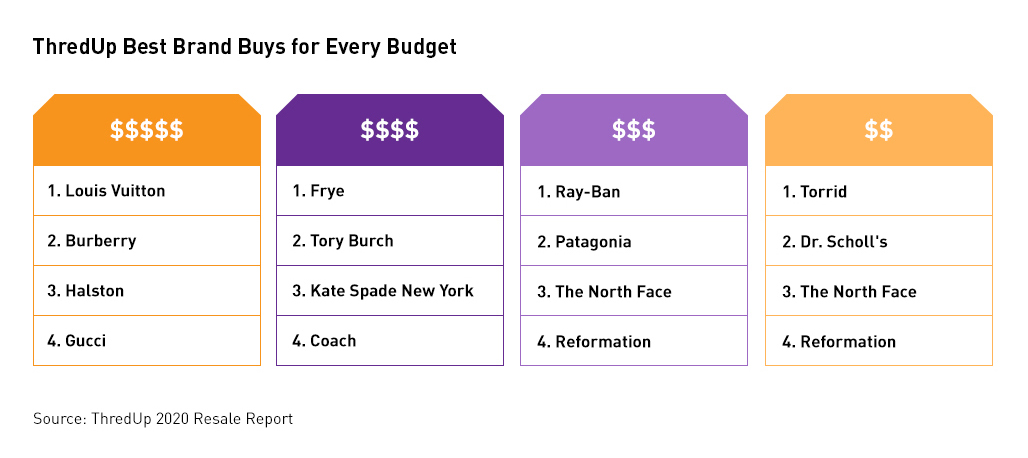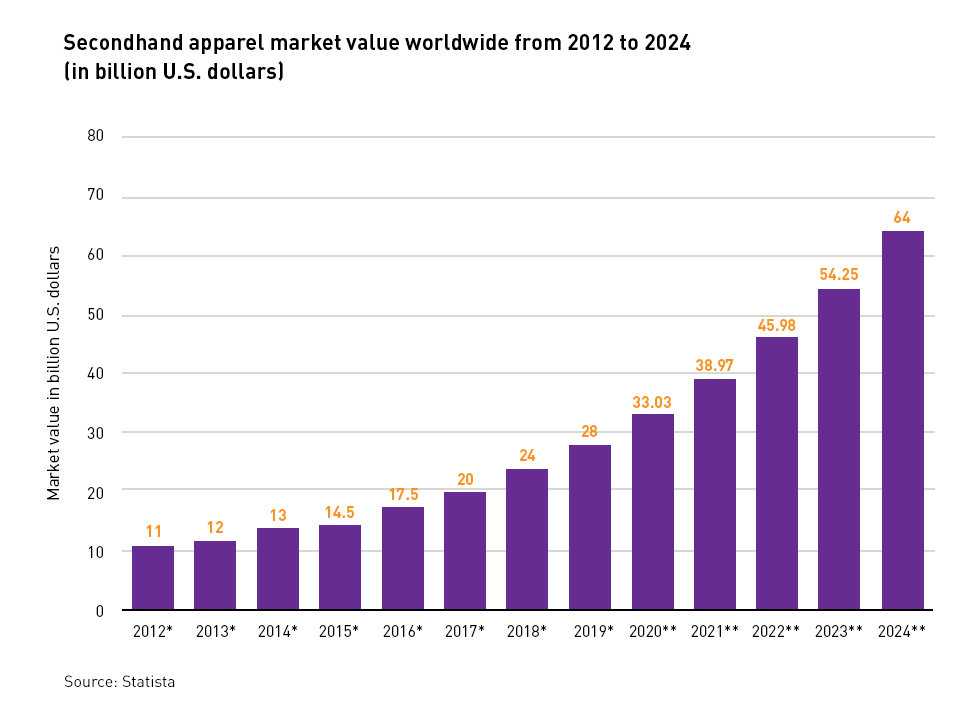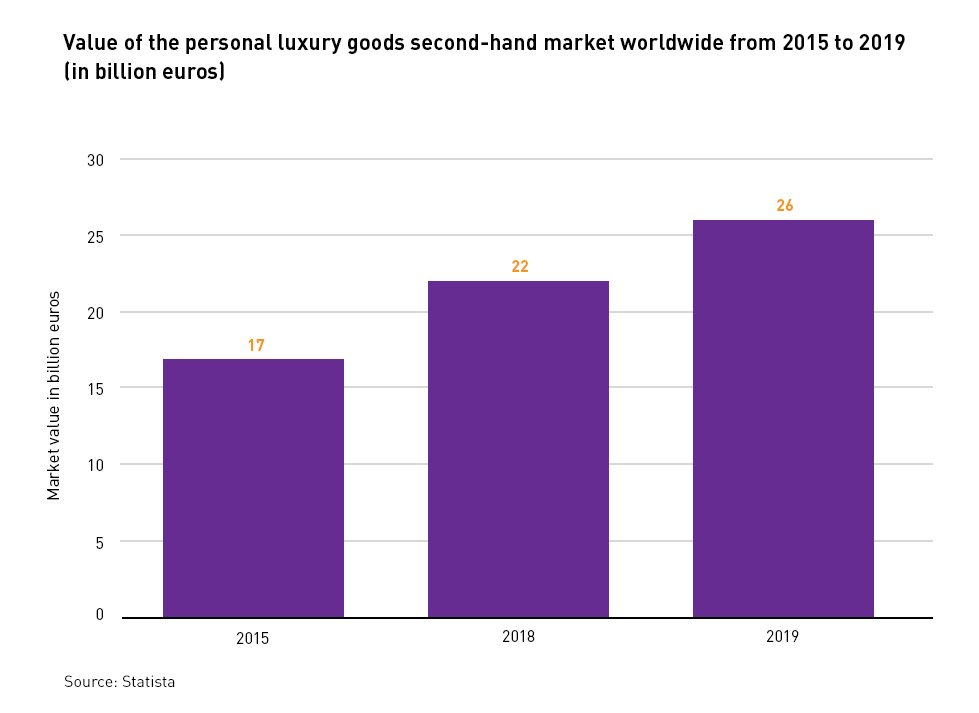
While Black Friday 2020 is expected to be the most profitable shopping event to date, many brands and retailers are also adopting and implementing a new selling trend, recommerce, which involves the exact opposite action implied in Black Friday: labels buy back second-hand items from consumers.
Even though recommerce seems like a brand-new movement due to the increasing number of brands, retailers and marketplaces launching circular platforms and programs, the resale online market’s pioneers date back to a decade ago.
A few businesses saw the potential of recommerce and decided to create their own online platforms or marketplaces offering consumers a wide-range of second-hand items. Since then, recommerce awareness has exponentially grown as well as the consumers trust in selling their unwanted goods to online platforms. Second-hand retailers and marketplaces such as ThredUp, Vestiaire Collective, Depop and PoshMark grew in popularity and now boast a product range that varies from sport brands to luxury fashion labels.

The success of recommerce mirrors the increasing empowerment of Millenials and Gen Z which have a different perception of buying second-hand garments comparing to older generations. The stigma previously associated with purchasing pre-owned products is fading through these younger generations, so we can relate the recommerce growth to a generational mindset shift which involves the desire to buy more second-hand goods, and so supporting a circular economy.
According to ThredUp, 62 million women bought second hand clothes in 2019 comparing to 56 million in 2018. Even though studies have already reported a year-by-year recommerce surge, the unexpected Covid-19 pandemic and the consequential behaviour change speeded up its growth even more. McKinsey & Company wrote ‘the next normal has started to emerge, with consumers indicating they will adopt long-term behavioural changes that will last beyond Covid-19’. Consumers are starting to embrace different shopping habits and see the advantages of purchasing pre-owned goods, in fact ThredUp’s recent report showed 82% of its respondents adopted a thriftier attitude and 88% are open to purchase used fashion when financial resources get tighter.
The generational mindset shift and Covid-19 consumption habits have influenced the second-hand sector to the point that Statista forecasted that its worldwide market value will reach 65 billion U.S. dollars in 2024, comparing to 11 billion U.S. dollars in 2012.

Alongside online shopping platforms aimed at selling second-hand products, this year we have seen an increasing number of brands, retailers and marketplaces adopting circular initiatives to extend the products life cycle.
According to the retailer John Lewis & Partners, ‘the average lifetime for an item of clothing is estimated as 2.2 years’ in the UK and ‘extending the life of clothing by nine months can significantly reduce its environmental impact’. Moved by a sense of responsibility, John Lewis & Partners launched a Buy Back service in 2019 which involves giving vouchers and gift cards in exchange for unwanted garments.
The Buy Back service opportunities have also resonated in the worldwide retail sector, with IKEA recently announcing that it will be purchasing back unwanted IKEA furniture, and it will refund up to 50% of the product’s original price. Depending on the conditions of the furniture, IKEA will resell, donate or recycle the items.
International marketplaces have seen the Buy Back service as an opportunity to renew second-hand products by repurposing and repairing them before listing them in the platforms. An example of this is the ‘Certified Refurbished’ product classification which will soon be launched by eBay. The global marketplace will be offering consumers the possibility to purchase used items with a two-year warranty and deliver directly from brands.
The fashion and lifestyle marketplace Zalando entered to the European recommerce sector last month with a ‘pre-owned’ clothing category entirely dedicated to pre-loved garments bought back by the marketplace. The VP of Recommerce at Zalando, Torben Hansen, said: ‘we believe by doing that we can really bring pre-owned to the mainstream consumer’.
Globally, resale luxury platforms are growing in popularity and many haute couture fashion brands have started collaborating with them. From the consumer perspective, resale platforms are the affordable gateway to enter to the sophisticated world of luxury fashion, and many shoppers are becoming their regular customers. According to Statista, the second-hand personal luxury goods market worldwide has been growing in the past years and it reached 26 billion Euros in 2019.

Luxury recommerce is an opportunity also for brands to adopt a more sustainable business model, keeping in mind that clothing is the fourth major cause of environment pollution. The online resale market could be the best way to make a profit by giving a second life to unsold clothes. Several luxury brands have started approaching second-hand marketplaces to adopt a circular economy, for instance Burberry, Stella McCartney and Gucci are now partnering with The RealReal marketplace which is specialised in selling pre-worn garments.
Here at We Are Pentagon, we will be watching closely to see how ecommerce continues to flourish this decade.

Let us develop a tailored solution for your business that will help you reach new international customers and grow your global sales.
get in touch